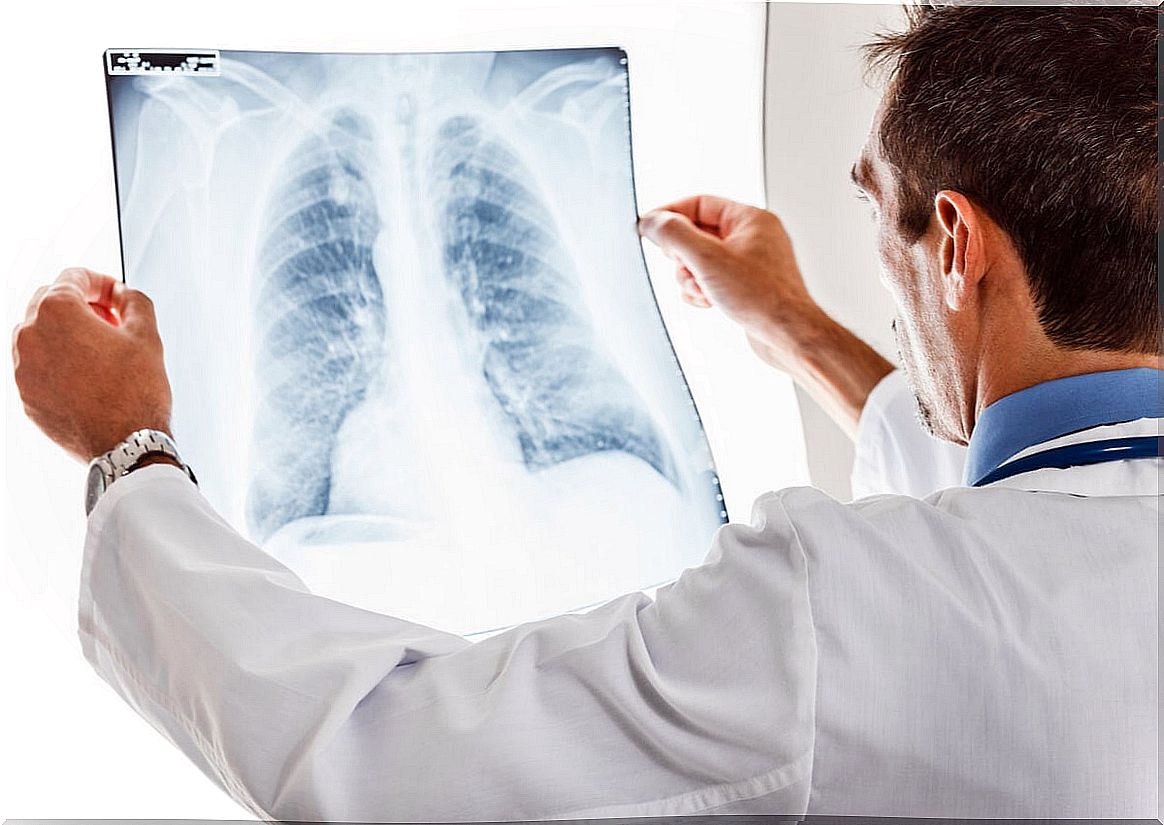Is Bronchitis Contagious?
Bronchitis is a pathology that can be contagious and is characterized by the affection of the lower airways. It happens when the bronchial tubes in the lungs become inflamed due to infection or for other reasons, such as smoking or inhaling toxic gases and dusts for a long time.
It is essential to note that there are two types of bronchitis: a chronic and an acute variant. According to epidemiological studies, the former, of a prolonged nature and complex approach, can affect up to 11% of the population between 20 and 70 years of age. Therefore, it is normal to ask the following question: is bronchitis contagious? Here we give you the answer.
Types of bronchitis
To answer the question that concerns us, we must describe in detail the two types of bronchitis that can occur in the patient. In short, acute bronchitis is contagious and chronic is not. But do not stop reading, because this statement requires a long list of nuances to take into account.

Acute bronchitis
According to the bibliographic source Emergency Medicine , more than 10 million people attend the clinic annually in the United States for episodes of this condition. Thus, we can say that it is a relatively common pathology.
As cited by other specialized sources, the infectious agents that cause acute bronchitis are viruses in 90% of cases (adenovirus, influenza virus, parainfluenza, RSV, rhinovirus, bocavirus, coxackie or herpes simplex) and in 10 The remaining% are bacteria ( Streptococcus pneumoniae stands out ). Therefore, we are facing a pathology of a contagious nature.
According to these references already cited, because they are associated with viral infections, acute bronchitis follow a seasonal pattern. That is, they occur much more during the winter months, as cold and dry climates are correlated with greater viral transmission.
Taking the example of the influenza virus, it seems to have a basic reproductive value R0 around 1.3 (according to the New York Times ). This means that an infected person, on average, transmits the disease to 1.3 more people. Thus, acute bronchitis is subject to these types of epidemiological parameters.
According to the Mayo Clinic , the symptoms of acute bronchitis can be summarized in the following list:
- Cough with production of mucus.
- Fatigue.
- Difficulty breathing.
- Light fever and chills.
- Chest discomfort.
It should be noted that this variant of bronchitis is self-limited. It resolves 10 to 14 days after the first symptoms appear.
Despite being related to pathogens, acute bronchitis can also appear due to non-infectious processes (allergies, aspirations or gastroesophageal reflux). Therefore, not all cases of acute bronchitis are contagious, but most are.
Chronic bronchitis
In this case, we are facing a long-term pathology characterized by recurrent inflammation of the airway with secondary damage. As the National Heart, Lung, and Blood Institute (NIH) explains, continuous coughing lasts for several months. In addition, it is recurrent, since it is presented again for two or more consecutive years.
In this case, we are not moving into a terrain of pathogens. Sources such as the Mayo Clinic assure that up to 75% of cases are associated with tobacco smoking. Other risk factors can be asthma, cystic fibrosis, age, or genetic predisposition. It is also often part of a serious condition called chronic obstructive pulmonary disease (COPD).
According to the United States National Library of Medicine , symptoms of chronic bronchitis are more severe and long-lasting than those of the acute variant. Among them are the following:
- Continuous, frequent and prolonged cough that produces a lot of mucus.
- Wheezing – a whistling or screeching sound when you breathe.
- Shortness of breath: especially during physical exertion.
- Pressure in the chest.
Although this pathology is usually associated with non-infectious agents, this is not the case in all cases. This type of bronchitis can also be caused by microorganisms, such as Streptococcus pneumoniae, Haemophilus influenzae, Moraxella catarrhalis, and Mycoplasma pneumoniae .
This risk of an added complication of respiratory tract infection occurs especially in people who have undergone tracheostomies or in immunosuppressed patients.
How to prevent bronchitis?
When asked if it is contagious bronchitis, we have given you a clear answer: the acute variant is usually infectious in nature, but the chronic one is not. Therefore, the means of prevention will depend on the type of condition from which we are trying to protect ourselves.
In any case, the Mayo Clinic collects some general considerations to take into account. Some of them are the following:
- Avoid close contact with people who have the flu or other respiratory conditions. Viruses are transmitted from saliva microparticles excreted during coughs and sneezes.
- Wash hands with soap or disinfectant frequently, especially in winter and times of high epidemiological risk.
- Do not touch your eyes, nose and mouth without first having carried out the proper cleaning tasks.
- Get an annual flu vaccine, especially risk groups, such as those over 65 years of age.
As we can see, these measures are aimed at the prevention of acute bronchitis, since it is the one with the highest infectious nature. To avoid chronic bronchitis, it is clear that not smoking is the best measure.

Is bronchitis contagious?
Despite what many people believe, the two types of bronchitis do not differ according to the causative agent, but rather by the duration of the inflammation of the bronchial tubes. Therefore, not all acute cases are due to pathogens, nor are all chronic due to smoking. There are exceptions, although typical influenza viruses are generally associated with the acute version.
Thus, with a recurrent mucous cough lasting more than two weeks, visiting the doctor is always essential. This can respond to chronic bronchitis or many other diseases of the upper respiratory tract.









